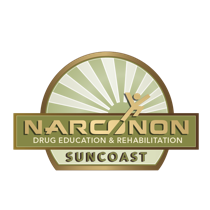Florida Marijuana Bill Fails Despite $153 Million Push

The November 2024 election was a big one in Florida. In addition to helping decide the Presidential race, six proposed amendments to the Florida constitution were on the ballot. Florida Amendment 3 proposed the legalization of recreational marijuana. Despite millions invested by “Big Marijuana,” it failed.
The Bill: Its Contents
The proposed amendment, submitted in August 2022, would have made recreational marijuana use legal. Specifically, adults over 21 would have been able to possess, purchase, or use marijuana products without being subject to “criminal or civil liability or sanctions under Florida Law,” even though cannabis possession is still a federal offense.
While the clause on individual use was pushed to the forefront of the initiative, the real money-maker for the marijuana business was paragraph five:
“(5) Medical Marijuana Treatment Centers […] acquiring, cultivating, processing, manufacturing, selling, and distributing marijuana products and marijuana accessories to adults for personal use shall not be subject to criminal or civil liability or sanctions under Florida law.”
The Pushers: Following the Money
Trulieve Cannabis Corp not only owns the largest number of Medical Marijuana Treatment Centers throughout Florida (159 locations) but was also the biggest funder of the committee that ran the Amendment 3 ballot initiative. The committee, self-titled Smart and Safe Florida (SSF), ran on cash donations almost entirely provided by Trulieve.
Days before the election, Trulieve threw another $1.5 million into the ring, increasing their total donations to $144.6 million, equivalent to 95 percent of the $153.2 million in cash raised by SSF since its inception in 2022.
The Stakes: Their Gain, Your Loss
While Trulieve CEO Kim Rivers’ repeated use of the phrase “citizen initiative” to media sources gives one idea, it is clear who was paying the bill.
Their Gain
Leading up to the vote, a fiscal impact statement provided by a government analysis committee, the Florida Financial Impact Estimating Conference, stated:
“Based on other states’ experiences, expected retail sales of non-medical marijuana would generate at least $195.6 million annually in state and local sales tax revenues once the retail market is fully operational, although the timing of this occurring is unclear.”
Florida’s average combined state and municipal sales tax rate is 7 percent. Reverse engineering the expected tax income shows the stakes were high. Big Marijuana’s potential gain was $2.44 billion in sales.

Your Loss
Legalizing recreational marijuana is not a new topic, but the truly harmful effects on society are often swept under the rug, especially by those seeking to profit. Colorado was the first U.S. state to legalize cannabis for adults 21 and older in 2012. Here are some highlights from the Rocky Mountain High Intensity Drug Trafficking Area Strategic Intelligence Unit’s (RMHIDTA) 2017 report, five years after implementing the new law:
- Traffic accidents and deaths: “Since recreational marijuana was legalized, marijuana related traffic deaths increased 151 percent while all Colorado traffic deaths increased 35 percent.”
- Marijuana use by minors: “Colorado past month marijuana use shows a 45 percent increase in comparing the three-year average prior to recreational marijuana being legalized to the three years after legalization. Colorado past month marijuana use for ages 12 and older is ranked third in the nation and is 85 percent higher than the national average.”
- Public health issues: “The yearly rate of emergency department visits related to marijuana increased 52 percent after the legalization of recreational marijuana.… The yearly rate of marijuana-related hospitalizations increased 148 percent.”
- Black market crackdowns: Ten RMHIDTA Colorado Task Forces conducted 144 investigations of black-market marijuana in Colorado, resulting in 239 felony arrests, 7.3 tons of marijuana seized, and 43,949 marijuana plants seized.
- Violent crime: Violent crime increased 18.6 percent, and property crime increased 8.3 percent in Colorado since 2013.
- Majority disagreement: After the state law was passed, 65 percent of local jurisdictions in Colorado banned medical and recreational marijuana businesses.
The Addiction: A Slippery Slope
While many will argue that there are a lot “harder” drugs on the market, weed today is many times more powerful than cannabis in the 1970s. THC, the addictive substance in marijuana, has gone from 1 to 3 percent in weed 50 years ago to 18 to 23 percent today. Not to mention, plant material is often mixed or sprayed with other substances to increase its impact. Once a person starts using a psychoactive drug like marijuana, it can be hard to get off that slippery slope.
The Solution: Drug-Free Rehab is Possible
If you or someone you care about is affected by addiction, there is an answer. There is hope. Narconon Suncoast’s unique program offers a solution unlike other rehabs. It does not require one to take more drugs to get off the drug or drugs one is currently on. It focuses on handling the root of addiction, so that once returned to normal life one is able to cope with the stressors that jumpstarted the drug usage in the first place. Contact us today to find out more about our approach and how it could work for you, too. Our mission is to help you live drug-free, for good.


